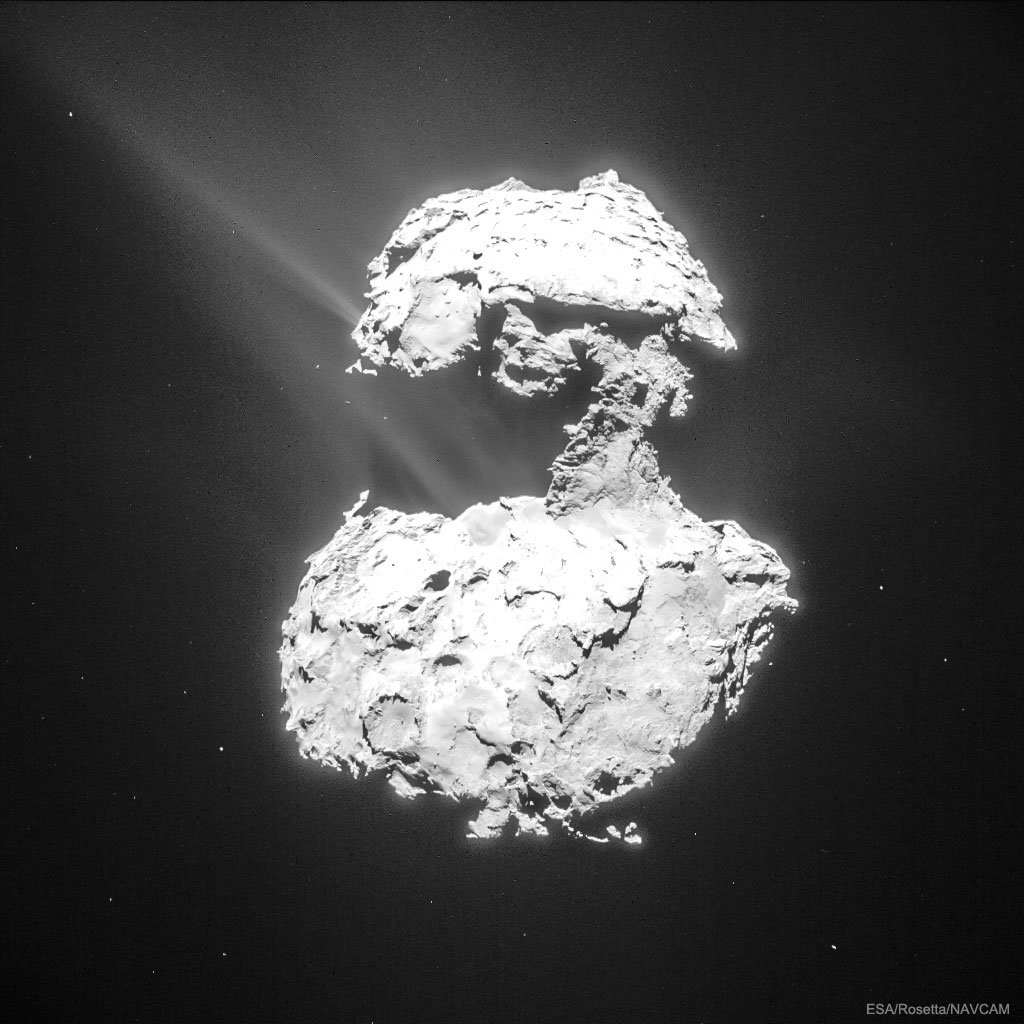2020 January 27
Comet CG Evaporates
Image Credit & License: ESA, Rosetta, NAVCAM
Explanation: Where do comet tails come from? There are no obvious places on the nuclei of comets from which the jets that create comet tails emanate. One of the best images of emerging jets is shown in the featured picture, taken in 2015 by ESA’s robotic Rosetta spacecraft that orbited Comet 67P/Churyumov-Gerasimenko (Comet CG) from 2014 to 2016. The picture shows plumes of gas and dust escaping numerous places from Comet CG’s nucleus as it neared the Sun and heated up. The comet has two prominent lobes, the larger one spanning about 4 kilometers, and a smaller 2.5-kilometer lobe connected by a narrow neck. Analyses indicate that evaporation must be taking place well inside the comet’s surface to create the jets of dust and ice that we see emitted through the surface. Comet CG (also known as Comet 67P) loses in jets about a meter of radius during each of its 6.44-year orbits around the Sun, a rate at which will completely destroy the comet in only thousands of years. In 2016, Rosetta’s mission ended with a controlled impact onto Comet CG’s surface.
蒸发中的丘泽彗星
影像提供与授权:ESA , Rosetta , NAVCAM
说明:彗尾从何而来?在彗核上,最后形成彗尾的喷流,其实并不会源自特定的位置。彗星喷流的最佳影像之一,可参见2014年到2016年间绕行丘泽彗星(Comet CG)的欧洲航天局.罗塞塔太空船,摄于2015年的这幅主题影像。这张影像证实,随着丘泽彗星靠近太阳受热,羽状的气体尘埃从难以数计的位置冒出来。这颗彗星有二个明显分瓣,大者宽度约4公里,较小者宽约2.5公里,二者以一道细颈相连。分析指出这种蒸发发生在彗星表面下的深处,最后才以尘埃和冰喷流的形式穿出表面。 丘泽彗星(亦称为67P彗星)在周期6.44年的绕日轨道中,半径大约会缩减1公尺,依这个损耗率来推算,这颗彗星在数千年内就会完全销毁。在2016年,罗塞塔太空船以受控撞击丘泽彗星表面的方式,终结其任务。




Pingback: 丘泽彗星的雪 – NASA中文